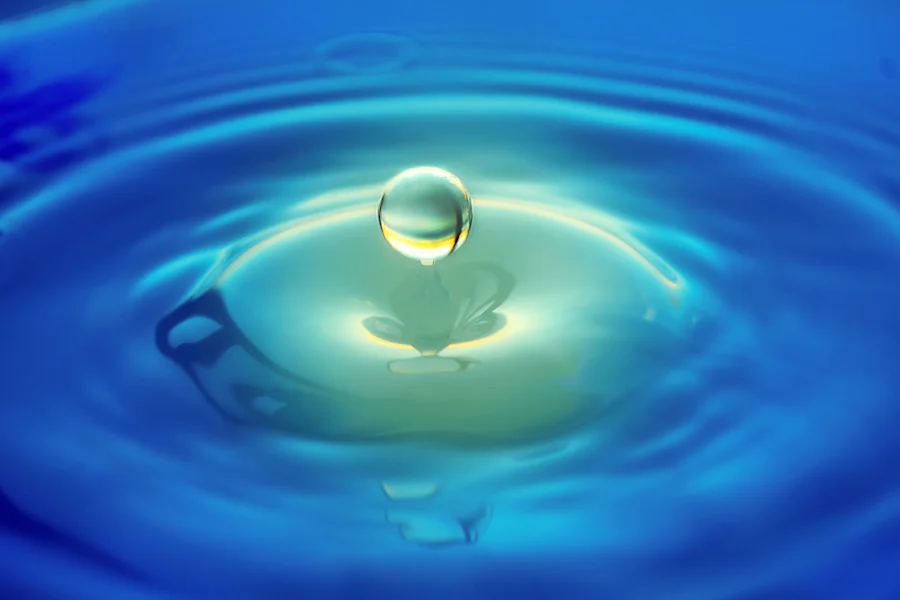Consciousness and Cosmos

What is the absolute line between the Divine Consciousness and the Universe of Nature? This is the question that chapters 14 and 15 attenpt to answer in continuation from chapter 13. To become “liberated” from our bindings to the ever-changing natural world and merge into our eternal DIvine Truth, we must continue to explore the elements of Nature itself and become detached from them.
Chapter 14 expands on the explanation of the gunas, the “three properties of nature but also the corresponding three underlying attitudes of mind that shape all of human behavior” (BG 14.1) – tamas, rajas, and sattva. All life evolves from these three forces of nature, while the pure consciousness is what lies above (or below or within) and brings it into being.
Sattva ties the calm person to joy, rajas binds active doers to incessant activity, and tamas fastens indolent people to delusion and sloth. Over the course of a day all three gunas ebb and flow within each person. (BG 14.9-10)
The sattva guna is balanced and calm, and is the light that gives the mind clarity and sharpness to see through to the Divine within. Rajas keeps us clinging to more and more wordly things and tamas gives us no impetus for action or change. Our whole task in the practice of any of the described paths of yoga in The Bhagavad Gita is to continue to seek the energy of sattva, to move beyond disturbances that come from the clinging to impermanence or being stuck in a place of disturbance (even from the desire to get to the goal of yoga). With sattva predominating, the sight of the soul and focused energy toward union with our Divine Self within is what will lead us to ultimately transcend the gunas, themselves still part of nature.
But then what? For many of us, the idea of a “holy indifferent” (BG 14.24-25), “calm, steady, unaffected, unconcerned, and unmoved” (BG 14.22-23) person might sound stoic or completely emotion-less. However, this is not what is truly explained.
“The Jiva’s Journey” (BG 15.7-20) in chapter 15 aims to explain how the individual soul (Jiva, Atma, Purusha) come to “draw the senses around itself, experiencing the pleasures, desires, and pains of the world” (BG 15.9). The senses are used through the mind by the jiva to work out accumulated karmas. If we are clouded by the senses, the gunas, the ego, and the lower mind, we will continually be in Avidya (spiritual ignorance). However, yogis who “surrender your ego and purify your mind” (BG 15.11) Will behold the Atma within and utilize all of their Nature to go towards that light and peace of consciousness.
In other words, it is not that the jiva ceases to have senses to experience or to be in the world, but enters into a space of consciousness where the experiences of pleasure and pain, virtue and vice, no longer disturb the individual consciousness (citta). It is the experience of living in the light of the soul while also being able to observe all that is still whirling in the world around.
Chapter 15 ends with a description of what I understand as yet another layer or level of Purusha – the Purushottana. This aspect of Divinity seems to have realm even higher than our individualized Jiva or Atma. It is described similar to Krishna’s cosmic form and the Atma itself, but is also described as being “the highest aspect” and “the Supreme Absolute Highest Self” in The Bhagavad Gita, beyond the perishable Prakrti and imperishable Purusha. I think the The Yoga Sutras of Patanjali might have a bit more succinct description in Yoga Sutras I.23-26, where Isvara (the Godhead) is described as something also beyond our individualized purusha.
- Supreme Being free from conflicts , unaffected by actions, untouched by cause and effect
- A special and unique Entity (Purusha)
- seed of all knowledge
- first and foremost teacher unbound to place, space, or time
In laymen’s terms, if Purushottana (BG) and Isvara (Yoga Sutras) are the ocean, our individual Atman or Purusha is a drop of the ocean. They are made up of the same stuff, pure consciousness, indistinguishable from each other when merged, but distinguishable by scope, vastness, and presence.
And yet again, The Bhagavad Gita eludes to its universality in philosophy and thought from even before modern religion, when this mysterious force that Krishna represents is referred to as “the consciousness in the entire cosmos” (BG 15.12) and “the energy that gives rise to all forms of matter and energy” (BG 15.13). No matter what we may end up calling it in the future and around the world, the description continues as the “beauty and bliss…of whom all the different scriptures in the world speak. In fact, it is I who authored them.” (BG 15.15)